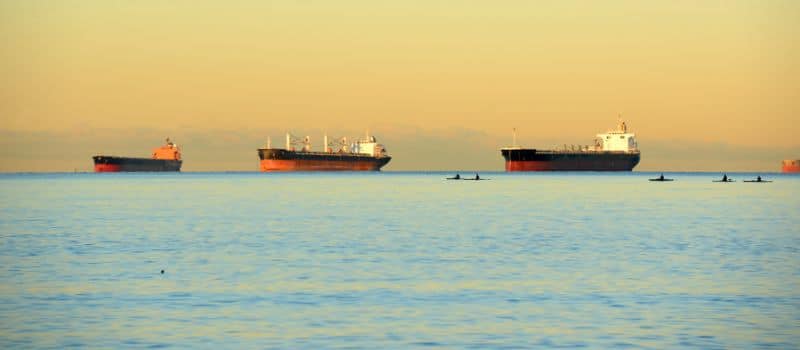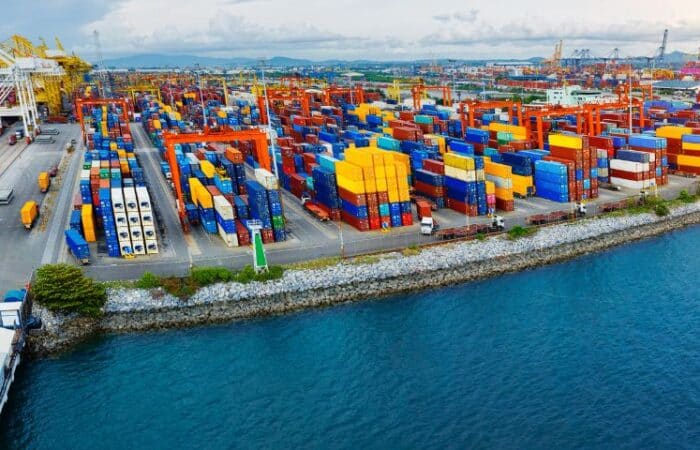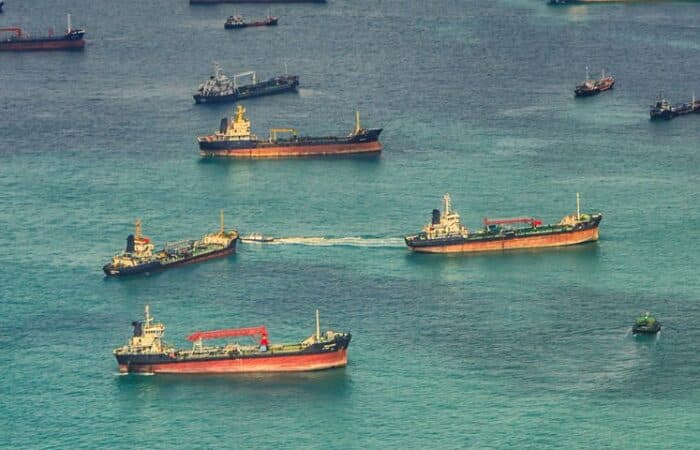Dark and Gray Fleets
What is the Dark Fleet?
The dark fleet refers to tankers that engage in dark activities, such as disabling their AIS, or using deceptive shipping practices – like GNSS manipulation, ID and location tampering – to transport crude oil, chemicals, and other wet cargo. The fleet is characterized by weak ownership structures and the use of multiple flags of convenience over short periods of time. The size of this fleet has fluctuated substantially with each new regulation, and even more so following the Russian oil ban and price caps.
Windward has identified approximately 1,100 dark fleet vessels. While the practice has been around for years, originating with trade from Iran and Venezuela, it has become a much bigger problem since the Russian invasion of Ukraine, as Russia avoids sanctions and sells oil to its allies. According to estimates by CNN, more than 10% of large tankers are involved in this illegal practice, and the numbers are steadily growing.
What is the Gray Fleet?
There is some confusion and overlap between the terms dark fleet and gray fleet, as they both engage in questionable shipping practices to avoid sanctions.
The gray fleet is a new phenomenon that has evolved in response to the Russian invasion of Ukraine and its subsequent sanctions. In gray fleet shipping, shipping companies have obscured vessel origins and ownership to give off the appearance of legality. This fleet is described as gray due to the difficulty in determining legality and sanctions compliance. Windward identified over 900 gray fleet vessels.
The cargo that they carry is primarily Russian oil routed to countries that haven’t banned trade with Russia, such as China, Turkey, and India.
Similarities Between Dark and Gray Fleets
Both types of fleets primarily transport different types of wet cargo, the dark fleet typically uses oil/chemical tankers, while the majority of gray fleet vessels are crude oil tankers.
Here are the top 3 subclasses used by each type of fleet.
Dark fleet subclasses:
- Oil/chemical tankers: 35%
- Crude oil tankers: 32%
- Oil product tankers: 20%
Gray fleet subclasses
- Crude oil tankers:33%
- Oil products tankers: 23%
- Oil/chemical tankers: 20%
When looking at the global number of tankers, the gray fleet and dark fleet combined account for 18% of the vessels that transport wet cargo.
According to a Washington Post report, these ships are well above the average age for oil tankers, as the original owners were selling them whole, instead of scrapping them for parts. The latest reports show that more than 50% of these fleets are 15 years or older.
Additionally, the top five flags for both dark and gray fleets are from these countries:
- Panama
- Liberia
- Marshall Island
- Malta
- Russia
With the exception of Russia, these countries all appear on the flags of convenience list, making it easier to avoid sanctions and employ substandard safety practices, and thus reduce costs.

How to Detect the Dark and Gray Fleets
Without the right tools, it can be challenging to identify a ship carrying sanctioned cargo, because they put a great deal of effort into hiding their actions. Here are some common characteristics of dark and gray fleet ships:
- Disabled AIS transmitter: the ships will stop transmitting their GPS location to prevent anyone from tracking their movement.
- Inconsistent information: if a ship’s name, flag, or registration information does not match the information available from official sources, or if the vessel frequently changes its identification information, it could be a dark or gray fleet ship.
- Unusual behavior: dark fleet vessels may exhibit unusual behavior, such as operating in restricted areas, avoiding ports or coastlines, or conducting a suspicious rendezvous with other vessels at sea.
- Ownership registration: the majority of dark fleet vessels are registered to owners in the UAE, followed by Greece, Hong Kong, the Marshall Islands, and Liberia.
- Older ships: dark fleet vessels are typically 15 years or older, and are often not properly maintained to the highest standards. This increases the odds of a major oil spill, or accident, due to faulty equipment.
While it can be difficult to track all this data, there are AI solutions that can scan the official records, monitor AIS, and track a ship’s movements to help identify dark and gray fleet vessels.
How the Dark and Gray Fleets Impact the Shipping Industry
The goal of sanctioning trade with Russia was to pressure the country to end its invasion of Ukraine. But by working with both the dark and gray fleets, Russia has been able to continue selling oil, even increasing the supply from pre-war levels.
The dark and gray fleet are both involved in transporting Russian oil and present many questions and risks for the global shipping industry.
- Higher costs: it’s estimated that there are more than 600 tankers out of a global fleet of 6,000 that are being used for dark and gray fleets, and that number has been steadily increasing. This limits the availability of tankers for legitimate cargo and places capacity constraints on suppliers, who have to raise their prices.
- Ownership and political connections: it is still unclear who owns and operates the dark fleets. According to Tatiana Mitrova, a Russian oil expert at the Center on Global Energy Policy at Columbia University, it may not be the Kremlin itself, but rather Russian exporters with close political ties to the Russian government. The money can therefore still end up supporting the Russian war effort. It is extremely important for anyone shipping with tankers to complete their due diligence to lower the sanctions compliance risk.
- Increased risk of accidents: as the number of dark and gray fleet tankers increases, so does the risk of accidents and major spills. According to Richard Matthews, head of research at EA Gibson, these older vessels aren’t equipped with the latest equipment or maintained to the minimum standards, which can lead to a disaster.
















